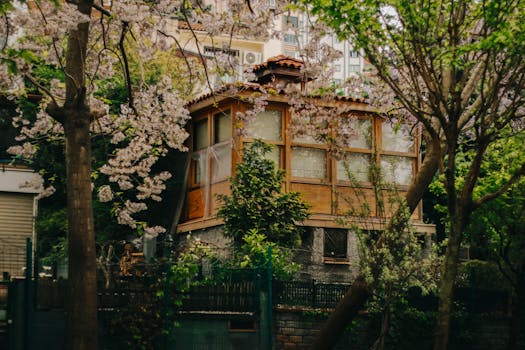
Urban Green Spaces: The Future of Outdoor Living in European Cities by 2025
Urban Green Spaces: The Future of Outdoor Living in European Cities by 2025 is a concept that has gained significant attention in recent years. As the world becomes increasingly urbanized, the need for green spaces in cities has never been more pressing. In this article, we will explore the importance of urban green spaces and how they will shape the future of outdoor living in European cities by 2025.
Introduction to Urban Green Spaces
Urban green spaces refer to areas of land in cities that are dedicated to parks, gardens, and other green areas. These spaces are essential for providing a range of benefits, including improving air quality, reducing noise pollution, and promoting mental and physical health. Urban green spaces also play a crucial role in mitigating the effects of climate change, such as reducing the urban heat island effect and managing stormwater runoff.
Benefits of Urban Green Spaces
The benefits of urban green spaces are numerous and well-documented. Some of the most significant advantages of these spaces include:
- Improved air quality: Urban green spaces can help to reduce air pollution by absorbing pollutants and producing oxygen.
- Reduced noise pollution: Green spaces can act as a buffer against noise pollution, creating a more peaceful environment for residents.
- Promoting mental and physical health: Spending time in nature has been shown to have a range of health benefits, including reducing stress and anxiety, and promoting physical activity.
- Mitigating the effects of climate change: Urban green spaces can help to reduce the urban heat island effect, manage stormwater runoff, and promote biodiversity.
Challenges Facing Urban Green Spaces
Despite the many benefits of urban green spaces, there are several challenges facing these areas. Some of the most significant obstacles include:
- Lack of funding: Many cities lack the funding needed to create and maintain urban green spaces.
- Competition for land: Urban green spaces often compete with other land uses, such as housing and commercial development.
- Climate change: Climate change is altering the weather patterns and ecosystems of urban green spaces, making it challenging to maintain these areas.
Future of Urban Green Spaces in European Cities
By 2025, urban green spaces are expected to play an even more critical role in European cities. Some of the trends that are likely to shape the future of these spaces include:
- Increased focus on sustainability: Cities are likely to prioritize sustainability in the design and maintenance of urban green spaces.
- Integration with other urban systems: Urban green spaces will be designed to work in conjunction with other urban systems, such as transportation and energy systems.
- More community engagement: Cities will prioritize community engagement and participation in the design and maintenance of urban green spaces.
Conclusion
In conclusion, urban green spaces are essential for providing a range of benefits in European cities. By 2025, these spaces will play an even more critical role in promoting sustainability, mitigating the effects of climate change, and improving the health and wellbeing of residents. As cities continue to evolve and grow, it is essential that urban green spaces are prioritized and protected for future generations.





